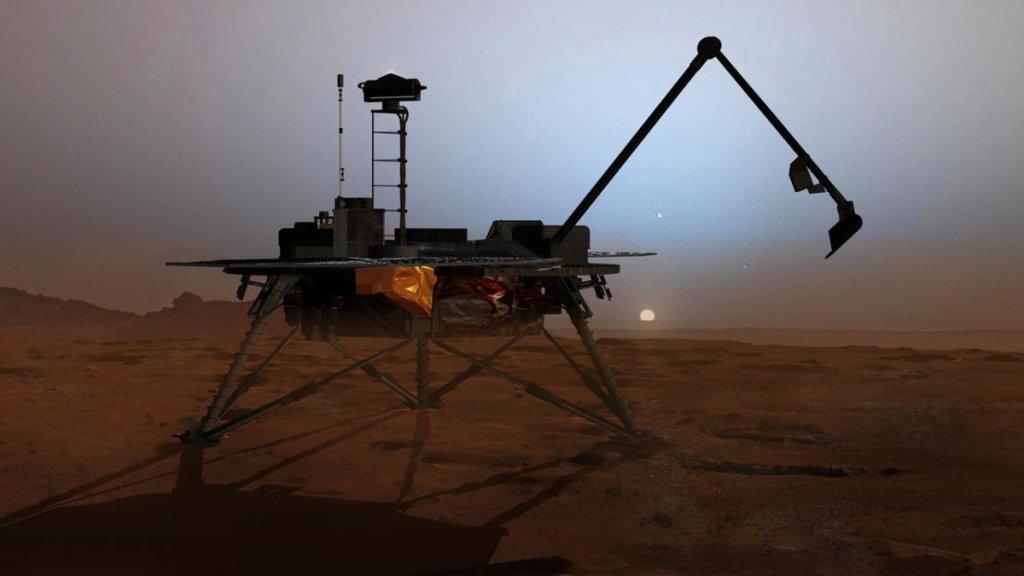
On This Day In Space: May 25, 2008: NASA’s Phoenix spacecraft lands on Mars (Image Credit: Space.com)
The Phoenix Mars lander was NASA’s sixth mission to successfully land on Mars, and it was the first mission to touch down near the planet’s north pole. The objective for this mission was to look for evidence of water ice below the Martian surface. This would help scientists study the history of climate change on Mars. The mission would also look for clues about whether the Red Planet could have been habitable or even hosted some kind of alien life in the past.
A Brief History of Mars Missions

Phoenix spent almost 10 months flying to Mars before it plunged into the atmosphere going close to 13,000 mph. Parachutes slowed it down to about 5 mph, and Phoenix gently landed after a 7-minute descent.
Three Mars orbiter missions adjusted their orbits so they could be in a good position to watch the landing. This was the first time that a spacecraft’s landing on another planet was caught on camera.
Phoenix went silent in November 2008 after completing its primary mission. The Mars lander likely succumbed to the bitter Martian arctic winter, which caused temperatures to drop below its design life.
On This Day in Space Archive!
Still not enough space? Don’t forget to check out our Space Image of the Day, and on the weekends our Best Space Photos and Top Space News Stories of the week.
Follow us @Spacedotcom and on Facebook.








